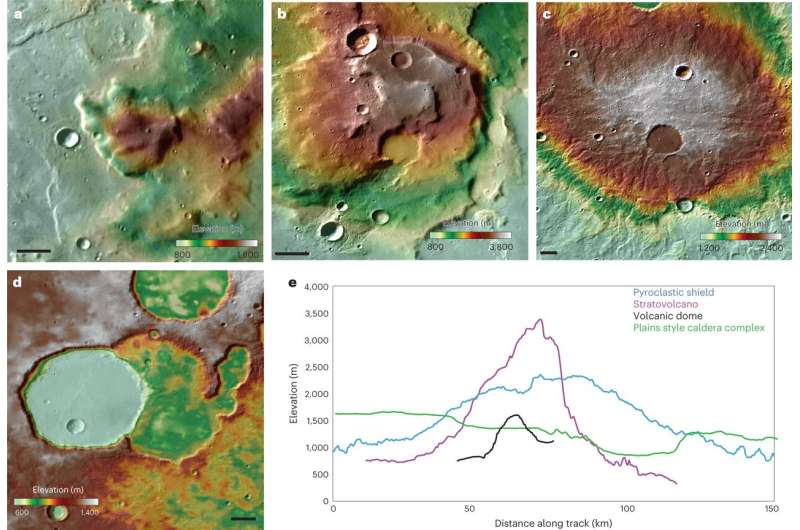February 14, 2024 report
This article has been reviewed according to Science X's editorial process and policies. Editors have highlighted the following attributes while ensuring the content's credibility:
fact-checked
peer-reviewed publication
trusted source
proofread
Study of Mars morphology and mineralogy suggests it may have once had active volcanism and crustal recycling

A small international team of Earth scientists, geologists and astronomers has conducted a study of Mars morphology and mineralogy and discovered that the planet may have experienced volcanism and crustal recycling during its formative years. For their research, published in the journal Nature Astronomy, the group analyzed a particular region of the red planet known to host inactive volcanos.
Probes sent to Mars have found that the planet is nearly devoid of volcanic activity or crustal recycling, making it stable, geologically speaking—though it is clear that it had flowing water recently enough for evidence to be seen on the planet's surface. In this new effort, the research team wanted to find out if Mars may have been more geologically active during its early years. They focused their efforts on the Eridania region, which has remains of an ancient Martian crust and several volcanic structures.
By studying data from several Mars probes, they found 63 volcanic structures that had not been previously identified, all of which were old enough to allow the research team to peek back in time. They divided the structures into four major categories: those with volcanic domes, stratovolcanos, pyroclastic shields and caldera complexes.
They found that together, the geography of the region suggested that the planet had gone through an active volcanic period along with associated crustal cycling approximately 3.5 to 4 billion years ago. They state that the crustal recycling was likely due to vertical tectonics, which prior research has suggested tend to be precursors to plate tectonics, similar to that experienced on Earth.
The researchers point out that thus far, plate tectonics have not been detected on any other planet in the solar system. Their analysis also showed evidence of some volcanic activity occurring underwater, which hints at the possibility of life emerging, only to be extinguished when the planet lost its atmosphere.
More information: Joseph R. Michalski et al, Diverse volcanism and crustal recycling on early Mars, Nature Astronomy (2024). DOI: 10.1038/s41550-023-02191-7
Journal information: Nature Astronomy
© 2024 Science X Network





















